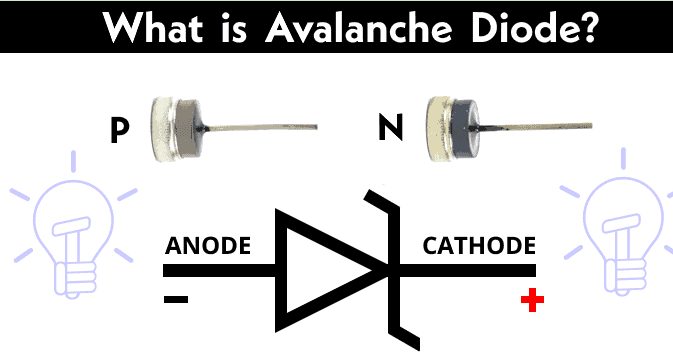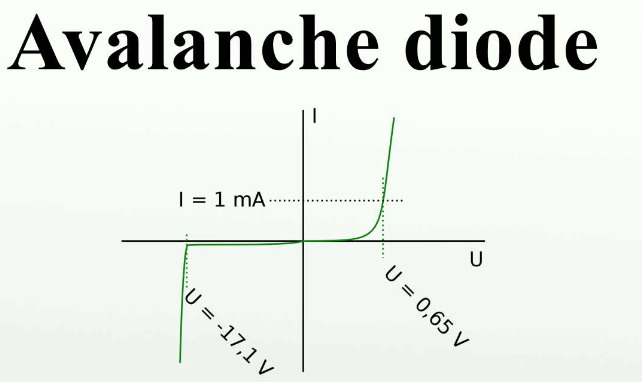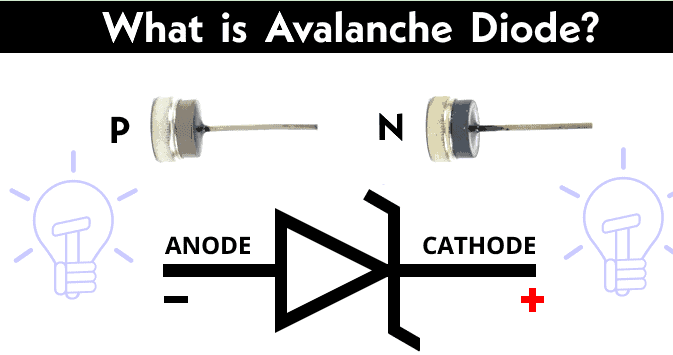
In the world of semiconductor devices, avalanche diodes occupy a unique and fascinating niche. These specialized diodes exploit a phenomenon known as avalanche breakdown to perform a variety of critical functions in electronics, telecommunications, and more. With applications ranging from voltage regulation and noise generation to photon detection and high-frequency microwave amplification, avalanche diodes are indispensable components that play an essential role in modern technology. This article will explore the fundamentals of avalanche diodes, their working principles, applications, and the innovative ways they are utilized in various fields.
The Basics of Avalanche Diodes
An avalanche diode, also known as an avalanche photodiode (APD) when used in photodetectors, is a semiconductor device that operates in the reverse-biased mode. Unlike regular diodes that are primarily used to allow current to flow in one direction, avalanche diodes are designed to leverage a unique electrical breakdown phenomenon known as “avalanche breakdown” or “Zener breakdown.” This phenomenon occurs when a high reverse voltage is applied across the diode, causing a sudden increase in current.
Avalanche breakdown is a quantum mechanical process, where electrons gain enough energy from the applied electric field to ionize other electrons through impact ionization. This leads to a cascading effect, resulting in a rapid multiplication of charge carriers within the diode. The multiplication process increases the current exponentially, making avalanche diodes highly sensitive to even minute changes in incident light or voltage.
Working Principles of Avalanche Diodes

The operation of avalanche diodes can be understood through the concept of breakdown voltage and the avalanche multiplication factor. Avalanche diodes are typically operated in the reverse-biased mode, meaning the voltage is applied in a way that it opposes the natural flow of charge carriers (electrons and holes) in the semiconductor material. When the applied reverse voltage reaches a critical value known as the breakdown voltage (VBR), the avalanche breakdown occurs.
At breakdown voltage, the electric field is strong enough to cause electrons to collide with other electrons with sufficient energy to free them from their atomic bonds. This leads to the creation of electron-hole pairs, which, in turn, gain enough energy to impact-ionize other electrons. This chain reaction of electron multiplication results in a significant increase in the current through the diode. The avalanche multiplication factor (M) quantifies this effect, and it is typically greater than one, indicating that for every electron that collides, more than one new electron is generated.
Applications of Avalanche Diodes
Avalanche diodes find applications in a wide range of fields due to their unique characteristics, such as high sensitivity, low noise, and rapid response time. Some of the notable applications include:
Photodetectors: In the realm of photon detection, avalanche photodiodes are employed to detect very low levels of light, making them invaluable in applications like laser rangefinders, lidar systems, and optical communication networks. They provide the high gain needed to detect weak optical signals.
Voltage Regulation: Avalanche diodes are used in voltage reference circuits. They offer a stable voltage output over a wide temperature range, making them essential in precision analog and mixed-signal circuits.
Noise Generation: Avalanche diodes are used in noise generators, producing random electrical noise that is useful in various applications, such as cryptography, signal processing, and electronic testing.
Avalanche Transistors: These are specialized transistors that utilize avalanche breakdown for high-frequency microwave amplification, making them crucial in RF (Radio Frequency) and microwave applications.
Quantum Key Distribution (QKD): In the realm of quantum cryptography, avalanche photodiodes are used in QKD systems to detect individual photons. The high gain and low noise characteristics of avalanche diodes enable secure communication.
Particle Detectors: Avalanche diodes are employed in particle detectors to sense and count individual particles in experimental setups like those used in high-energy physics research.
Medical Imaging: In medical imaging applications, avalanche diodes are utilized in scintillation detectors to convert incoming ionizing radiation into detectable electrical signals.
Innovative Applications
As technology continues to evolve, avalanche diodes have found new and innovative applications. For example, researchers are exploring their use in quantum computing and quantum entanglement experiments. The high sensitivity of avalanche diodes makes them suitable for detecting and measuring the unique properties of quantum particles.
Moreover, in lidar technology, used for autonomous vehicles and environmental monitoring, avalanche photodiodes are enabling more precise and long-range object detection by enhancing the sensitivity to weak reflected laser signals.
Challenges and Future Developments
While avalanche diodes have proven their worth in a variety of applications, they are not without challenges. One significant challenge is the need to maintain stable operating conditions, particularly in high-gain modes. Variations in temperature, voltage, and other external factors can affect their performance. Efforts are underway to develop more robust designs and improve temperature compensation techniques.
Furthermore, the quest for higher performance continues, with researchers and engineers working on enhancing the quantum efficiency, reducing excess noise, and extending the spectral range of avalanche diodes. These improvements aim to expand their applications in fields such as quantum communication, remote sensing, and emerging technologies like quantum internet.
Conclusion
Avalanche diodes, with their ability to harness the unique phenomenon of avalanche breakdown, are integral components in various technological domains. Their applications span from photodetectors and voltage regulation to quantum cryptography and quantum entanglement experiments. As technology advances, the role of avalanche diodes is likely to expand further, contributing to innovations in communication, sensing, and quantum computing. Understanding the principles and potential of avalanche diodes is crucial in harnessing their power for current and future applications in electronics and beyond.
